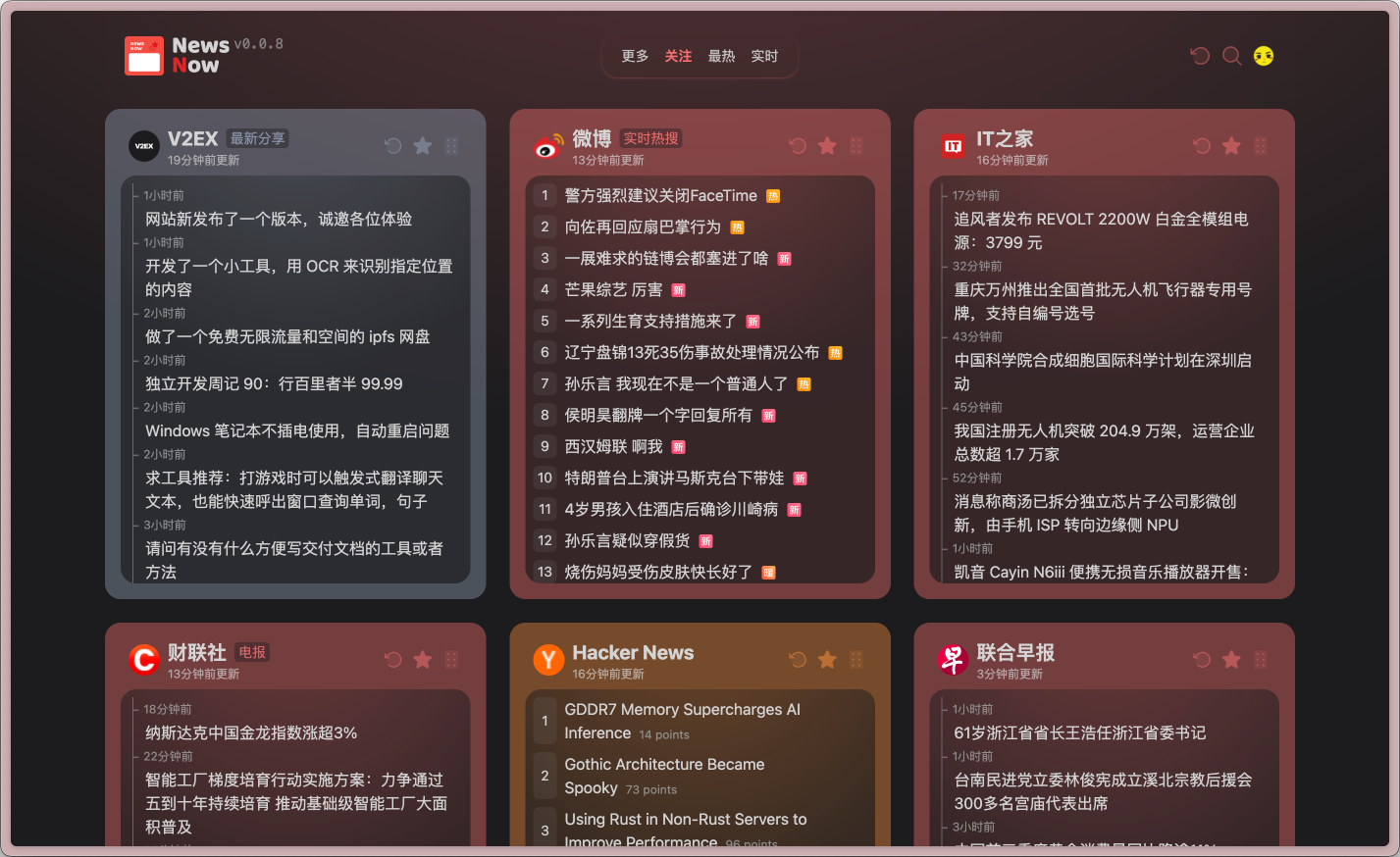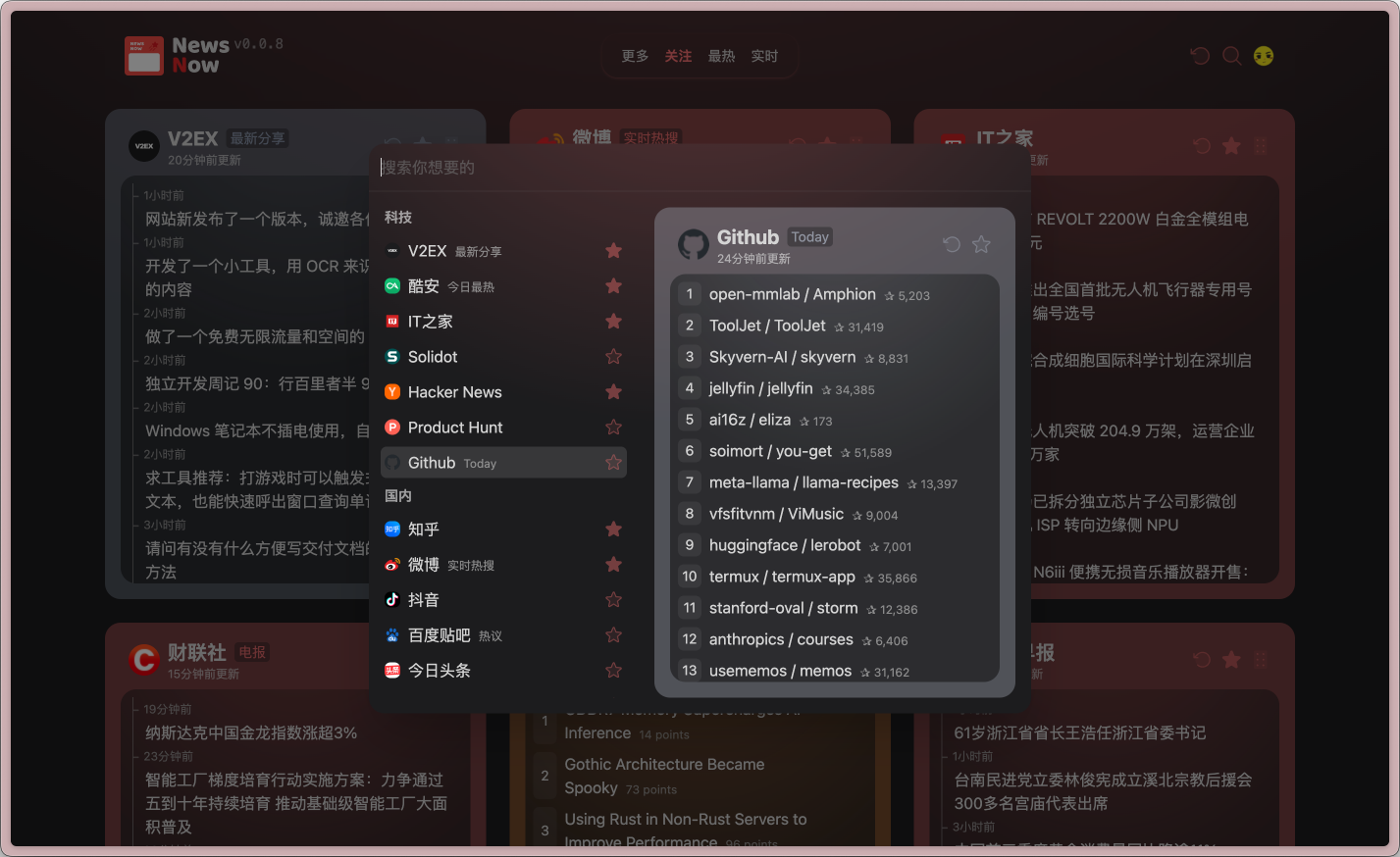NewsNow
English | 简体中文
Elegant reading of real-time and hottest news
Deployment
If login and caching are not required, you can directly deploy to platforms like Cloudflare Pages or Vercel. Just fork the repository and import it into the respective platform.
For Cloudflare Pages, you need to set the build command to pnpm run build and the build output directory to dist/output/public.
For login, which involves GitHub OAuth, you only need to create a GitHub App. No special permissions are required. The callback URL should be https://your-domain.com/api/oauth/github (replace your-domain with your actual domain).
After creating the app, you will get a Client ID and Client Secret. Different platforms have different places to set environment variables; refer to the example.env.server file. If running locally, rename it to .env.server and add the necessary values.
# Github Client ID
G_CLIENT_ID=
# Github Client Secret
G_CLIENT_SECRET=
# JWT Secret, usually the same as Client Secret
JWT_SECRET=
# Initialize database, must be set to true on first run, can be turned off afterward
INIT_TABLE=true
This project primarily supports deployment on Cloudflare Pages and Docker. For Vercel, you need to set up your own database. Supported databases can be found at https://db0.unjs.io/connectors .
The Cloudflare D1 database can be used for free. To set it up, go to the Cloudflare Worker control panel and manually create a D1 database. Then, add the database_id and database_name to the corresponding fields in your wrangler.toml file.
If you don't have a wrangler.toml file, you can rename example.wrangler.toml to wrangler.toml and modify it with your configuration. The changes will take effect on your next deployment.
If you receive an error indicating that the database is empty during deployment, you can create a table arbitrarily. The first execution will automatically initialize the required tables. Alternatively, you can use the following SQL statement to create a Cache Table:
CREATE TABLE IF NOT EXISTS cache (
id TEXT PRIMARY KEY,
updated INTEGER,
data TEXT
);
For Docker deployment. In the project root directory with docker-compose.yml, run
docker compose up
Development
Tip
Node version >= 20
corepack enable
pnpm i
pnpm dev
If you want to add data sources, refer to the shared/metadata, shared/sources, and server/sources directories. The project has complete types and a simple structure; feel free to explore.
License
MIT © ourongxing

